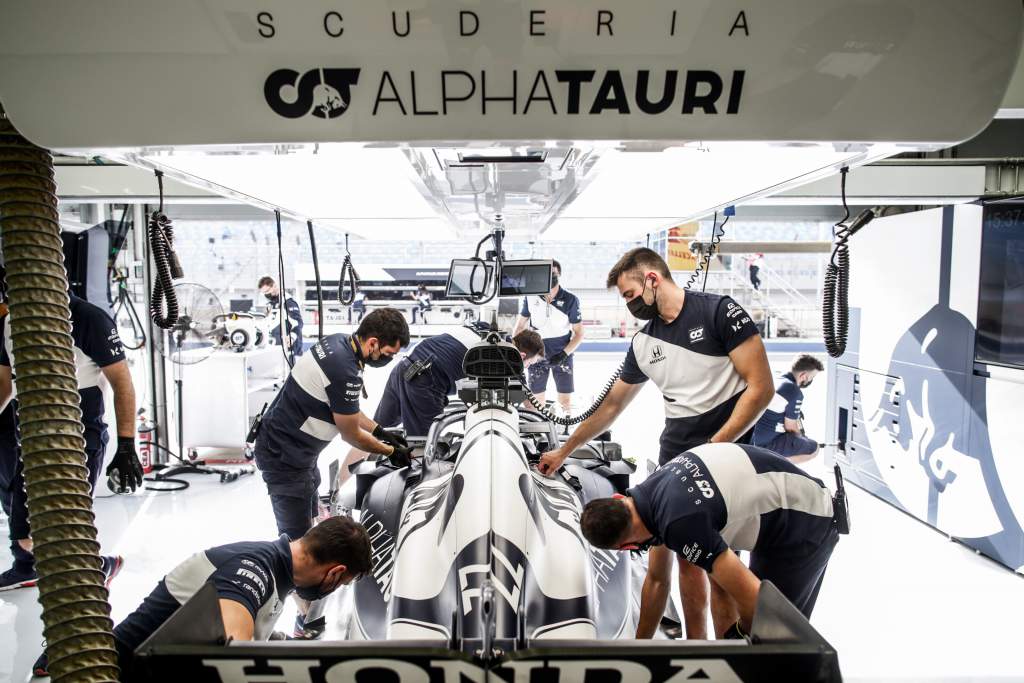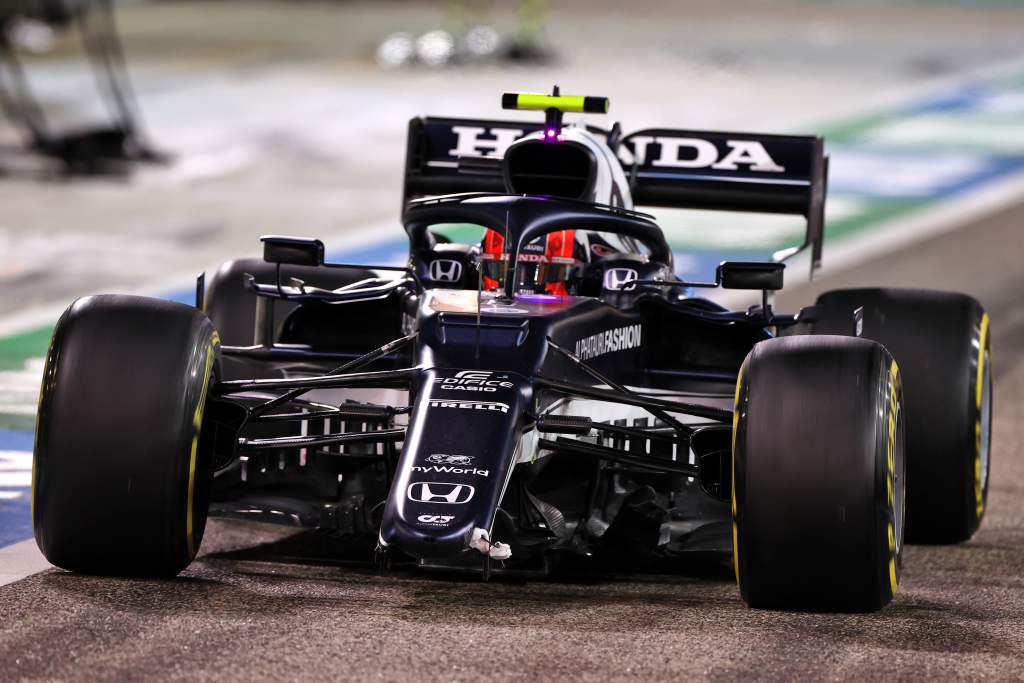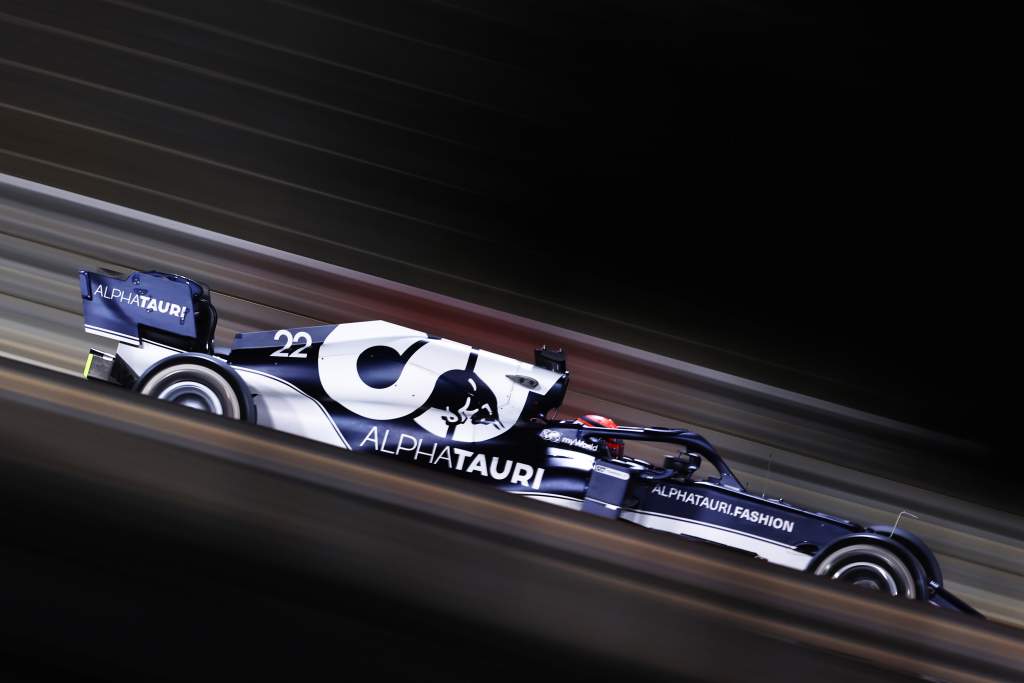Up Next

One of Formula 1’s leading midfield contenders went missing in the Bahrain Grand Prix, but based on its performance level so far, it has the potential to be a threat for best-of-the-rest in 2021.
AlphaTauri scored just two points in Bahrain courtesy of Yuki Tsunoda’s ninth place. But given he failed to make it to Q3 after struggling on medium-compound Pirellis and dropped as low as 17th early in the race, while team-mate Pierre Gasly’s race was ruined by clipping the back of Daniel Ricciardo’s McLaren on lap four, the results fell far short of the potential.
Yet Gasly’s Q3 lap to qualify fifth, having lapped just 0.131s slower than midfield leader Charles Leclerc’s Ferrari, shows how good the AlphaTauri AT02 is. And given Tsunoda showed superb pace on the soft tyres, setting the second fastest time in Q1, the team should have had both cars at the sharp end of the midfield.
The failure to convert laptimes into more than two points is reminiscent of last season’s erratic form. While AlphaTauri was consistently in the midfield pack in 2020 and had some outstanding results – notably Gasly’s fortuitous but well-executed victory at Monza, which was backed up by a further four top-six finishes – it should have at least beaten Ferrari to sixth in the constructors’ championship.
“I was happy with the pace of the car last year, but there were a couple of events where we went home a bit sad-faced” :: Jody Egginton
That it failed to do so, finishing 24 points behind, was down to a combination of factors that aligned to give it only a 50% points-finish strike rate. Technical director Jody Egginton, who took up the position after James Key’s departure to McLaren in 2018, with the role becoming permanent the following year, blames this in the “variance” in performance.
It’s an argument backed up by the numbers as, of the five teams in that midfield pack, AlphaTauri had the greatest standard deviation in terms of performance deficit to the front in 2020.
“Last year, we were in that mix but our variance in performance across the midfield was a bit greater than we wanted,” said Egginton.
“Some weekends, we had the car working really well, other weekends we struggled a little bit. In the second half of the year, that variance reduced and there were certain things we did to try and do that.

“This year, it appears we’re back in that mix. We probably need to see the next couple of races and then form a view of ‘are we more consistent?’
“I was happy with the pace of the car last year, but there were a couple of events where it performed really well and a couple of events where we went home a bit sad-faced. So we want to try and minimise that.
“You’ve got to do it in the midfield because it’s so tight, everyone’s stealing points off everyone and you can’t afford to drop points. We scored a lot of points last year and finished seventh. I think that’s a testament to how tight it is.
“The key to that is understanding our car, and its strengths and weaknesses and what makes it tick. It seems quite good here [in Bahrain]. And then Imola, we’ve got reasonable expectation, because there’s some similarities to here in some respects.”
Bahrain illustrated the point. It’s impossible to be sure where Gasly would have finished had he not hit the back of Ricciardo, although he had already been shuffled back to seventh by the two McLarens. But the qualifying pace of the car, combined with the fact that it looks consistently well-balanced from trackside, suggests it is firmly in the group of leading midfielders with Ferrari and McLaren.

It’s difficult to draw any definitive conclusions on race pace given the circumstances of the grand prix, but long runs in practice put AlphaTauri at a similar level to McLaren and Ferrari. Indications from the race are that the McLaren was the strongest on pace, but Tsunoda had periods in the race where his laptimes were very similar to Leclerc despite finishing 26.6s behind him.
We haven’t seen the AlphaTauri AT02 at any circuits other than Sakhir – although the team did give it limited promotional day running at Imola pre-season – but it does appear to be a user-friendly car that gives the drivers confidence and should perform well across a wide range of circuits.
By rejecting the opportunity for the ‘free’ upgrade to the 2020 Red Bull rear end in favour of focusing on front-end improvements to maximise the potential for downforce generation by spending its tokens on the nose structure, AlphaTauri appears to have built on the strengths of last year. But there’s still some way to go.
“It’s aerodynamics,” said Egginton when asked where the gains are still to be made. “The have changed dramatically because of the regulation change and [means] the way the car works aerodynamically at the rear.
“Everyone was trying to recover load, we’ve recovered a reasonable chunk. And now we’re trying to give the car a wider operating window aerodynamically to work in, especially at low speed. Then the driver can exploit that and we’ll go quicker.”
In the background, AlphaTauri is also transitioning to a new windtunnel. New regulations governing what is called “occupancy” of the windtunnel means it is switching facilities to share the Red Bull facility in Bedford. This means a step up from the 50% scale it ran in its Bicester tunnel to the maximum allowed 60%.
In the transition period, with the AT02 originally developed in the old windtunnel and the 2022 car being developed in Red Bull’s to the new regulations, the team will need to do plenty of aero data gathering to ensure good correlation.

That, combined with its commitment to maximising the parts it takes from Red Bull Technologies, gives AlphaTauri a good foundation to build on, as well as the ability to focus its resources on the all-important aero development that is the main performance differentiator in F1.
There are also upgrades to come at each of the next three races – Imola, Algarve and Barcelona – that Egginton describes as “incremental” but with “no headline-grabbers”. If these deliver as expected, it should ensure AlphaTauri has the pace to be a serious threat in the midfield.
Then it will be down to consistent execution and minimising the variance – with perhaps the most important factor whether Tsunoda can emerge as a more reliable points scorer than Daniil Kvyat was last year alongside established leader Gasly.
AlphaTauri heads to its home track of Imola, located just 10 miles down the road from its Faenza base, this weekend. It could be a happy hunting ground in 2021 given AlphaTauri was the third-fastest overall and the quickest midfielder there last year with Gasly fourth on the grid.

That race summed up its problems, with Gasly retiring thanks to a coolant leak having run in fifth place early on, but team-mate Kvyat taking his best finish of the season in fourth. Given Tsunoda has had plenty of F1 mileage at Imola, AlphaTauri can realistically expect to have both cars scoring significant points.
“We were pretty rapid at Imola last year and we’ve got a different car now, so we want to see how we’re going to go there,” said Egginton.
“It’s just quietly getting on with it really. I can’t give you any deep philosophy, it’s just focusing on ourselves, making sure we understood our car.”
With that sensible, methodical approach and a car that should be a good all-rounder, AlphaTauri has to be considered a threat for third in the championship last year. Whatever happens, it has the potential to eclipse its best-ever finish of sixth in the constructors’ championship.
But to do that, it needs fewer races like Bahrain where the return doesn’t match the performance.




